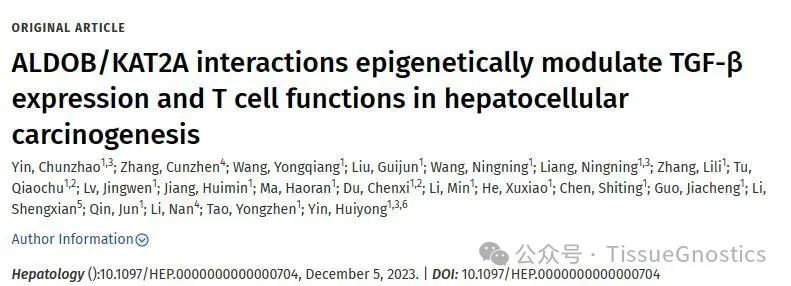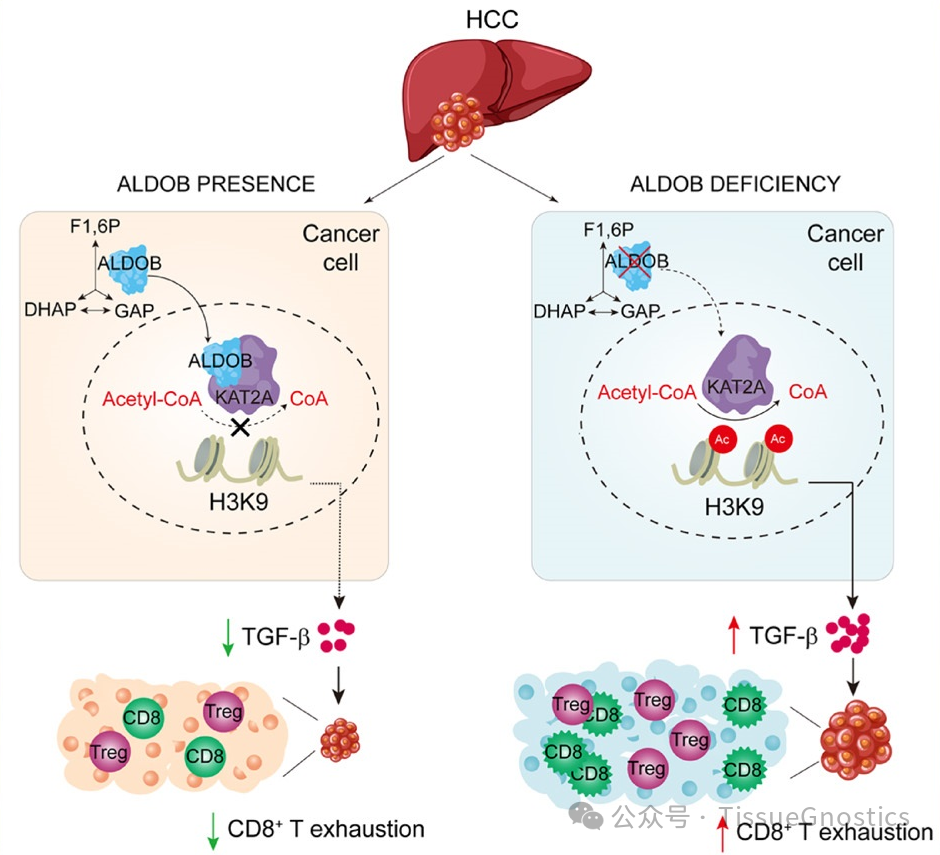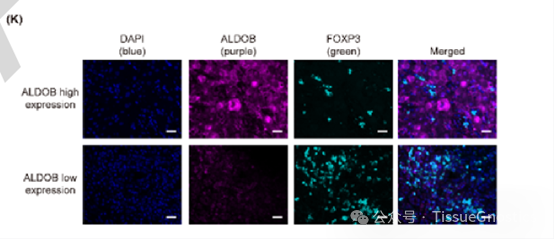Hepatocellular carcinoma (HCC) is one of the tumors with the highest incidence rate and mortality in the world, and its incidence rate and mortality are ranked sixth and fourth respectively. As an important immune signaling molecule in the tumor immune microenvironment, transforming growth factor - β (TGF - β) can bind to TGF - β receptors on the cell surface, activate signaling pathways, and affect the functions of tumor cells and immune cells in the tumor microenvironment. It plays an important role in the occurrence and development of tumors. The molecular mechanism by which the interaction between tumor cells and immune cells in the tumor microenvironment affects the immune response of liver cancer during the occurrence and development of HCC is still unclear. Fructose-1,6-diphosphate aldolase B (ALDOB) is an important metabolic enzyme in glycolysis, and its expression gradually decreases with the occurrence and development of liver cancer. Downregulation of ALDOB expression may cause metabolic remodeling in tumor cells and promote liver cancer. At the same time, some studies have found that the GLUTI/ALDOB/G6PD axis also affects the chemotherapy effect of pancreatic cancer. However, how the expression of ALDOB in liver cancer cells affects the tumor immune microenvironment and the specific mechanism still need further research.

Professor Yin Huiyong, the research team of the Shanghai Institute of Nutrition and Health, Chinese Academy of Sciences, published the cooperative research results entitled "ALDOB/KAT2A Interactions Epigeneously Modulate TGF - β Expression and T Cell Functions in Hepatocellular Carcinoma" online in the international academic journal Hepatology, which revealed the new mechanism of the loss of fructose-1,6-bisphosphate aldolase B (ALDOB) in tumor cells in liver cancer tissue to promote the transcriptional expression of TGF - β through epigenetic regulation, thereby causing depletion of effector T cells in the liver cancer microenvironment and promoting hepatocellular carcinoma.
Starting from clinical samples, this study conducted flow cytometry analysis and Western Blot detection on tumor tissues of liver cancer patients. It was found that the expression of ALDOB was significantly negatively correlated with the infiltration of CD8+T cells, indicating that downregulation of ALDOB expression in tumor tissues actually increased CD8+T cell infiltration; Further flow cytometry analysis of PD1 and CTLA-4 immunosuppressive molecules in CD8+T cells within liver cancer tissue revealed that these CD8+T cells are in an immune depleted state, suggesting that the expression of ALDOB in tumor cells affects the immune microenvironment of liver cancer. Through research, it has been found that ALDOB in liver cancer cells can enter the nucleus and bind with KAT2A, inhibiting the acetylation of H3K9 in the TGFB1 promoter region and reducing TGFB1 transcriptional expression, thereby reducing the number of Treg cells in tumor tissue and maintaining the function of CD8+T cells in the immune microenvironment of liver cancer; On the contrary, the loss of ALDOB in tumor cells can not only upregulate glycolysis, PPP, and TCA through metabolic remodeling, generate a large amount of acetyl CoA, promote tumor cell glucose and lipid metabolism, but also relieve the inhibition of KAT2A activity, increase H3K9 acetylation and upregulate TGF - expression, affect the number and function of CD8+T cells and Treg cells, and promote liver cancer. This study discovered a novel molecular mechanism by which the important metabolic enzyme ALDOB in glycolysis regulates the expression of TGFB1 gene by entering the nucleus, thereby affecting the immune microenvironment and immune response of liver cancer. This provides a potential new strategy for immunotherapy of liver cancer.
Experimental part
This article uses the TissueFAXS Plus panoramic tissue scanning quantitative analysis system from TissueGenomics to obtain images.
Panel 1 : ALDOB,FOXP3,DAPI
Panel 2 : CD3,CD4,DAPI
This article extensively utilized flow cytometry technology for quantitative analysis of cell phenotype and expression levels. However, in terms of key data, Tissue Cytometry technology can be further used as a validation standard for in situ validation methods. Compared to traditional research methods, the data obtained in this way is not only more comprehensive, but also studies the spatial distribution relationship from the perspective of single-cell protein expression, which is the most reflective research level of the real situation of organisms.

Mechanism diagram of ALDOB regulating TGF - β transcription expression through KAT2A and affecting the immune microenvironment of HCC

TissueFAXS Plus panoramic tissue scanning quantitative analysis system obtains images
Part of the content is reprinted from: Yin Huiyong Research Group of the Institute of Nutrition and Health discovered the new mechanism of liver cancer cell metabolism affecting tumor immunity - Chinese Academy of Sciences Shanghai Institute of Nutrition and Health (sinh. ac.cn)